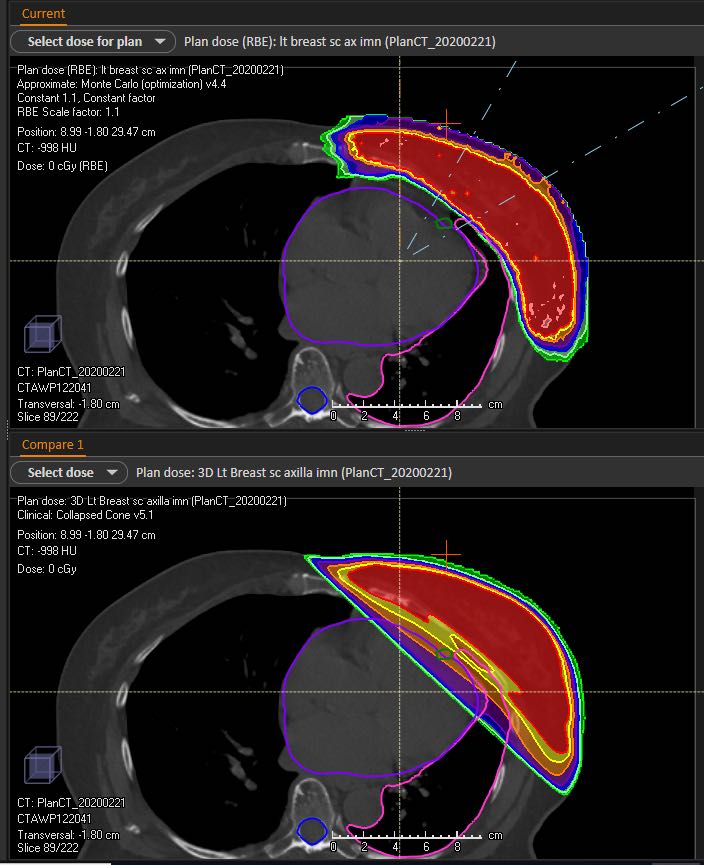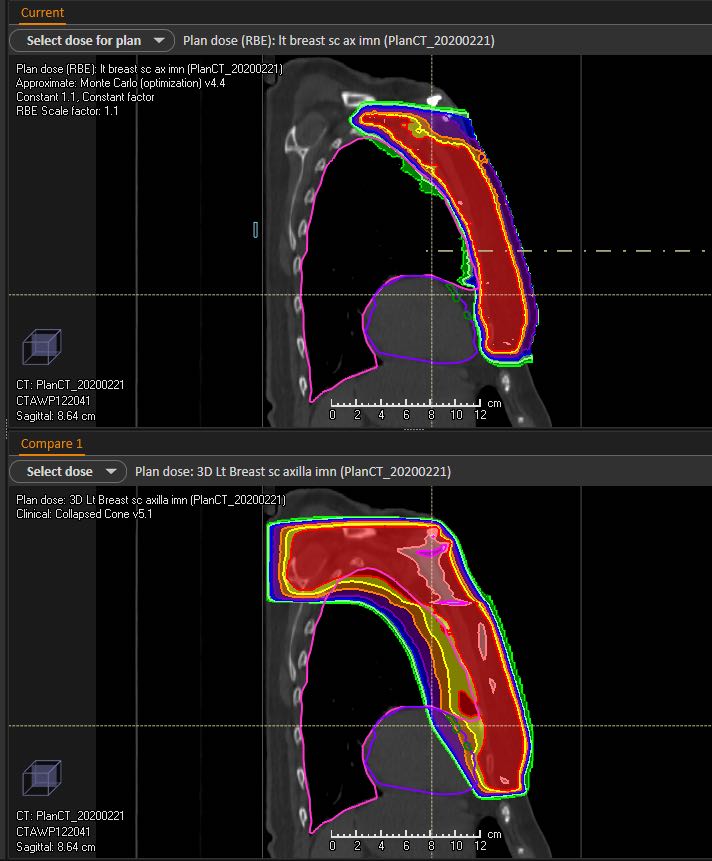

Proton beam radiation therapy is an FDA-approved treatment modality. Proton beam therapy directs a beam of protons (positively charged subatomic particles) at the radiation target, where they deposit the bulk of their energy in the last few millimeters of their range; tissue beyond the tumor receives very little radiation dose because of the absence of exit dose. Given the physical characteristics of protons (no exit dose), proton beam therapy may reduce the cardiovascular toxicity of radiation treatment compared to other forms of photon-based external beam radiotherapy by reducing the radiation dose to the parts of the heart during comprehensive nodal irradiation for locally advanced breast cancer.
Patient Presentation:
A previously healthy 81 year old woman was diagnosed with stage pT1cN1a (stage IIB) infiltrating lobular carcinoma of the left breast, ER 90%, PR 5%, HER2 3+ (positive). She underwent a lumpectomy and sentinel node biopsy, which showed 2 of 2 sentinel lymph nodes to be involved with carcinoma. Because her disease was HER2 positive, she received adjuvant chemotherapy and HER2 targeted therapy. During her systemic therapy, she developed atrial fibrillation, for which she underwent cardioversion and anticoagulation. She was recommended to receive radiation therapy to the left breast and comprehensive regional lymph nodes in the setting of HER2 positive, node-positive lobular breast cancer.

Treatment:
Radiation exposure to the heart is known to increase the risk of future cardiac events; this risk increases as the radiation dose to the heart increases, and is higher in patients with pre-existing cardiac disease or risk factors. Because of the recent development of atrial fibrillation, it was particularly important to minimize radiation exposure to the heart for this patient. This patient received 6 weeks of proton therapy for a total of 30 fractions. Proton therapy was done in conjunction with ongoing HER2 targeted systemic therapy. A comparison of photon vs proton radiation plans demonstrated a reduction in radiation exposure to the heart using protons, as shown in figure 1.
Proton Therapy Breast Cancer Experts:
Sara Alcorn, MD, MPH, PHD
Victoria Croog, MD
Marie Kate Gurka, MD

